
|
You entered: Earth's moon
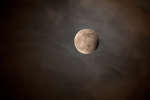 Blue Moon Eclipse
Blue Moon Eclipse
2.01.2010
The International Year of Astronomy 2009 ended with a Blue Moon and a partial lunar eclipse, as the second Full Moon of December grazed the Earth's shadow on December 31st. The New Year...
 Into the Shadow
Into the Shadow
24.01.2020
On January 21, 2019 moonwatchers on planet Earth saw a total lunar eclipse. In 35 frames this composite image follows the Moon that night as it crossed into Earth's dark umbral shadow. Taken...
 APOD: 2023 October 29 Б A Partial Lunar Eclipse
APOD: 2023 October 29 Б A Partial Lunar Eclipse
29.10.2023
What's happened to the Moon? Within the last day, part of the Moon moved through the Earth's shadow. This happens about once or twice a year, but not every month since the Moon's orbit around the Earth is slightly tilted.
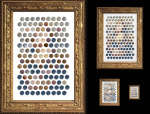 The Moona Lisa
The Moona Lisa
16.10.2021
Only natural colors of the Moon in planet Earth's sky appear in this creative visual presentation. Arranged as pixels in a framed image, the lunar disks were photographed at different times. Their varying hues are ultimately due to reflected sunlight affected by changing atmospheric conditions and the alignment geometry of Moon, Earth, and Sun.
 The Moona Lisa
The Moona Lisa
14.09.2024
Only natural colors of the Moon in planet Earth's sky appear in this creative visual presentation. Arranged as pixels in a framed image, the lunar disks were photographed at different times. Their varying hues are ultimately due to reflected sunlight affected by changing atmospheric conditions and the alignment geometry of Moon, Earth, and Sun.
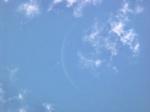 Crescent Venus and Moon
Crescent Venus and Moon
30.10.2006
There's something behind these clouds. Those faint graceful arcs, upon inspection, are actually far, far in the distance. They are the Earth's Moon and the planet Venus. Both the Moon and Venus are bright enough to be seen during the day, and both are quite capable of showing a crescent phase.
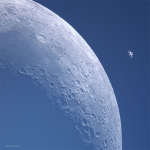 APOD: 2023 June 12 Б The Largest Satellites of Earth
APOD: 2023 June 12 Б The Largest Satellites of Earth
12.06.2023
WhatБs that near the Moon? ItБs the International Space Station (ISS). Although the ISS may appear to be physically near the Moon, it is not Б it is physically near the Earth.
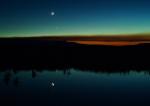 Reflections on the Inner Solar System
Reflections on the Inner Solar System
15.07.2005
Only Mars is missing from this reflective view of the major rocky bodies of the inner solar system. Captured on July 8th, the serene, twilight picture looks out over the Flat Tops Wilderness area from near Toponas, Colorado, USA and includes planets Mercury, Venus, Earth, and Earth's large natural satellite, the Moon.
 A Lunar Eclipse in Three Exposures
A Lunar Eclipse in Three Exposures
25.01.2000
Our Moon turned red last week. The reason was that during the night of January 20, a total lunar eclipse occurred. The above digitally superimposed photographs captured the Moon three times during this lunar...
 APOD: 2025 March 25 Б A Blue Banded Blood Moon
APOD: 2025 March 25 Б A Blue Banded Blood Moon
25.03.2025
What causes a blue band to cross the Moon during a lunar eclipse? The blue band is real but usually quite hard to see. The featured HDR image of last week's lunar eclipse, however -- taken from Norman, Oklahoma (USA) -- has been digitally processed to exaggerate the colors.
|
January February March April May June July |
|||||||||||||||||||||||||||||||||||||||||||||||||